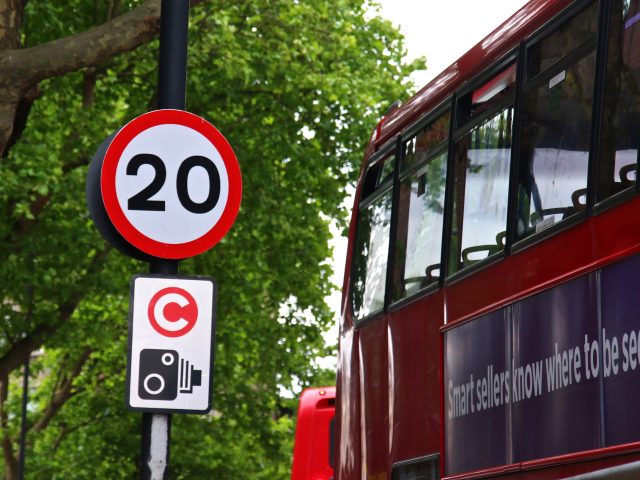FAQ: EU Cross Border Enforcement Directive
1. What does Cross Border Enforcement mean? What is the goal of this Directive?
Cross Border Enforcement refers to the pursuit of traffic offences committed by drivers of a car which is registered in an EU Member State different than the one where they were detected. The goal of the Directive is to offer an automated tool for enforcement authorities in the Member State where the offence was committed to pursue and fine the drivers of cars registered in other EU Member States when they commit traffic offences[1]. Current co-operation agreements exist in the form of bi-lateral and multi-lateral agreements and many EU Member States already have systems in place to follow up traffic fines. However they are often not able to deal with the increasingly complex cross-border problems posed by traffic offenders. The Directive presents an EU wide automated approach. This new Directive will also mean that EU Member States will not have to negotiate new bilateral agreements with other countries.
2. Current State of Play: ECJ Ruling
In May 2014, the European Court of Justice ruled that the legal basis of the Directive on Cross-Border Exchange of Information related to road safety 2011/82, which came into force in November 2013, was incorrect[2]. The European Court of Justice found that the measures proposed in the Directive do not concern ‘prevention of crime’ as defined under the police co-operation rules, but rather road safety, which is a transport issue. However, given the importance of the law for road safety, the ECJ said the current rules will stay in place while a new proposal is agreed. The Court has granted a one-year transition period, meaning the rules will remain in effect until May 2015.
Following the ruling a new Directive 2015/413 was adopted in March 2015 with a legal basis under the EU transport policy[3]. EU Member States must transpose the new legislation into their national law by May 2015 or risk facing EU infringement procedures. In the meantime the 2011/82 Directive remains in place at national law level until this is replaced by the newly transposed legislation. Three countries, UK, Ireland and Denmark have a later transposition deadline of May 2017.
3. How big is the problem?
According to the European Commission, non-resident drivers account for approximately 5% of road traffic in the EU. However, 15% of the number of detected speed offences are committed by non-resident drivers[4]. Moreover, according to the Commission document, a foreign-registered car is three times more likely to commit traffic offences than a domestically-registered one. The Commission also gives the example of France, where speeding offences committed by foreign registered cars reach approximately 25% of the total, with the figure going up to 40-50% of the total during periods of high transit and tourism. Consequently, the Commission expects the highest positive benefits to be observed in countries with high levels of transit and tourism traffic, such as Austria, Belgium, France, Germany, Hungary, Italy, Luxembourg, Poland or Spain.
4. Which traffic offences are covered by the Directive?
Eight major road safety related offences are included in the text of the EU Directive:
- Speeding;
- Not using a seatbelt;
- Not stopping at a red traffic light or other mandatory stop signal;
- Drink driving;
- Driving under the influence of drugs;
- Not wearing a safety helmet (for motorcyclists);
- Using a forbidden lane (such as the forbidden use of an emergency lane, a lane reserved for public transport, or a lane closed down for road works);
- Illegally using a mobile phone, or any other communications device, while driving.
The Directive will be most effective in following up offences which can be detected automatically, such as speeding and running red lights.
5. Will the level of fines be the same as in the driver’s own country?
No, the level of fines applicable is the same as for drivers of cars registered in the country where the offence was committed.
6. Where can I find information about the traffic rules in other countries?
Currently, the European Commission website provides relevant information related to the 8 offences covered by the Cross Border Enforcement Directive for all 28 EU member states, as well as a downloadable smartphone app:
http://ec.europa.eu/transport/road_safety/going_abroad/index_en.htm.
According to article 8 of the Directive, this information will also be made available in all the other official languages on the EU. Additionally, TISPOL, the European traffic police network, has published a series of country driving guides, providing information about national traffic laws: www.tispol.org
7. How does the Directive work? How do authorities follow up offenders?
Each of the EU Member States covered by the Cross Border Enforcement Directive have to designate a national contact point for the system. This contact point will grant access to the information exchange system for the identification of drivers committing one of the offences described above.
Upon detecting an offence, the contact point in that Member State grants access to the prosecuting authorities to perform a search through the information exchange system. They use the full licence plate number of the vehicle committing the offence.
Upon deciding whether to follow-up on the traffic offence in question, the authorities in the Member State of offence send an information letter to the owner of the registration certificate. This information letter has to be written in the same language as the registration certificate in the Member State of registration and it must include relevant information about the traffic offence – the nature of the offence, the date and time of detection, the article of the relevant piece of legislation infringed – and the legal consequences of the offence.
For example: a car registered in Poland is recorded as not stopping at a red traffic light in France. A National Contact Point grants access through the information exchange system to the prosecuting authority in France, e.g. police services and prosecutor’s offices.
Based on the results of the search, the French contact point can choose to follow up the offence by informing the holder of the Polish registration certificate – this can be the owner of the vehicle, whether as an individual or as a company – of the offence committed and its legal consequences under the French law. This information is provided in the Polish language and sent to the address included in the vehicle registration data.
8. Are all the 28 countries of the EU taking part?
Previously only 25 of the 28 EU countries are taking part. However due to the ECJ ruling, Denmark, Ireland and UK are affected by the change in legal basis as the Directive will now also be extended to them with a later deadline of May 2017.
9. Who pays for fines? What if an offence was committed with my car but I wasn’t driving it? And where is the payment made?
The information letter is sent to the owner of the vehicle recorded as committing an offence. A reply form is enclosed to this communication, which gives the opportunity of identifying the driver of the vehicle, in cases where the owner was not driving at the time of the offence. The information letter should also include details related how to pay fines resulting from committing the offence. This could include the bank details required to perform an international money transfer.
10. What happens if a fine is not paid?
In case of non-payment of a fine, Member States can follow up according to existing EU rules covering judicial co-operation on cross-border financial penalties. For more information, see:
http://ec.europa.eu/justice/criminal/recognition-decision/financial-penalties/index_en.htm
Drivers who have not paid a fine and return to the country in question may also face action – in the same way as a local resident.
12. When does this Directive become effective?
Member States have until the 6th of May 2015 to adopt national legislation which includes the provisions of the new 2015/413 Cross Border Enforcement Directive. The majority of countries have already transposed the rules into national law. Most of them are also well on the way to implementing the structures needed for the Directive to come into force.
[1] http://eur-lex.europa.eu/legal-content/EN/TXT/PDF/?uri=CELEX:32015L0413&from=EN
[2] ECJ Ruling 06/05/2014 http://curia.europa.eu/juris/document/document.jsf?text=&docid=151775&pageIndex=0&doclang=EN&mode=lst&dir=&occ=first&part=1&cid=533422
[3] http://eur-lex.europa.eu/legal-content/EN/TXT/PDF/?uri=CELEX:32015L0413&from=EN
[4] European Commission (2010) Cross border enforcement, Memo 10/642, http://europa.eu/rapid/press-release_MEMO-10-642_en.htm
Download







